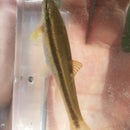Introduction: Basic Outdoor Knife
I've always wanted to make a knife for myself and this is Instructable will be that journey. I will be talking about materials, sourcing materials, minimal tools necessary, designing the knife, heat treating, and attaching handle slabs.
I have to stress the fact that I am no expert on the topic of knife making and the processes involved in it. This is what I did, right or wrong, I hope you enjoy and learn a lot.
Step 1: Know Your Materials and Sourcing
At your local hardware store, you'll find flat steel stock in various thicknesses, widths, and lengths. I thought it was awesome, an 8 foot x 2 inch x 1/8 thick piece of steel was only $14. I could cut several blanks from it and be completely content with the money spent but the quality of the steel is far too poor to hold an edge.
Researching what types of steels would be good for a beginner like myself, I found that 1084 and 1095 high carbon steel would be good. There is also 01 tool steel and stainless steels such as 440C but they are little bit more expensive so for a first knife, I'm avoiding it. Unfortunately, knife steel is much more expensive than structural steel. I found that living in Canada, knife steel is very difficult to come by.
I will be ordering my steel from Canadian Knifemaker Supply Ltd (https://www.knifemaker.ca/home.php)
Steel is sold by the inch and is much more expensive compared to the hardware store steel but the work and time put into a blade will be wasted if you start with poor quality materials.
Step 2: Designing Your Knife
Your knife is only limited to your imagination (and the dimensions of the steel you're working with). I recommend drawing the stock to scale on a piece of graph paper and sketching your knife design on it. Try to minimize the wasted material.
I wanted a very basic knife on the small side.
Transfer it to your knife blank with a photocopy and some glue.
Step 3: Rough Cut
Cut out your blank with a metal cutting hacksaw, bandsaw, etc. Drill pin holes. Make sure to keep it cool using a bucket of water.
Mark your bevel's center line making sure to leave it on the thicker side to prevent warping during heat treatment. I marked the point to file out by marking the edge with a marker then dragging a caliper on either side. The same thing can be done with a drill bit on a flat table. Clamp to the edge of a table and file out the bevel.
Drill holes for brass pins in handle.
Step 4: Heat Treat
You're going to need heat up the blade to critical temperature. Looks pale red and no longer is magnetic.
Easier said than done when on a budget.
After an epic fail which resulted in my makeshift forge melting, I strolled the aisles of my local dollar store and found a stainless steel utensil holder similar to the ones some people buy from Ikea and make into outdoor stoves. New forge found.
I also did not have charcoal and (for some reason) happened to have hardwood pellets on hand. After using them, I suggest using charcoal. Using wood pellets resulted in much more flame and much less coal in the end, unfortunately.
After critical temperature is reached, dip in an oil to quench and harden the blade.
Clean it off and place in a toaster oven at 450 degrees for an hour to temper.
Step 5: Sharpen
Sharpen your blade with your preferred method of sharpening blades. Cover blade for next step to prevent cutting yourself.
Step 6: Handle
Glue handles and pins using 5 minute epoxy and clamp until glue is set. For handles, I just used slabs of wood I cut from firewood.
File shape of the handle using a round file then sand smooth.
Treat handle with your oil or stain of your choice.
Step 7: Debrief
Total Cost: about $10.00
- 3/34" 1095 steel ($4.00)
- Brass pin 12" ($1.50)
- Utensil holder ($3.00)
- 5 Minute Epoxy ($1.50)
- Wood slabs (Free)
This project was fun and a great learning experience for me. I highly recommend you try it yourself, especially if you use a knife in your favourite past times (cooking, camping, bushcraft, etc).
Things that would make this project not a pain in the butt:
- Drill press
- Belt sander
- Angle grinder
- Propane fueled forge
- Quality wood slabs
Total time without all these things that would have made everything so much easier: 8 hours.

Participated in the
Tools Contest

Participated in the
Apocalypse Preparedness Contest













